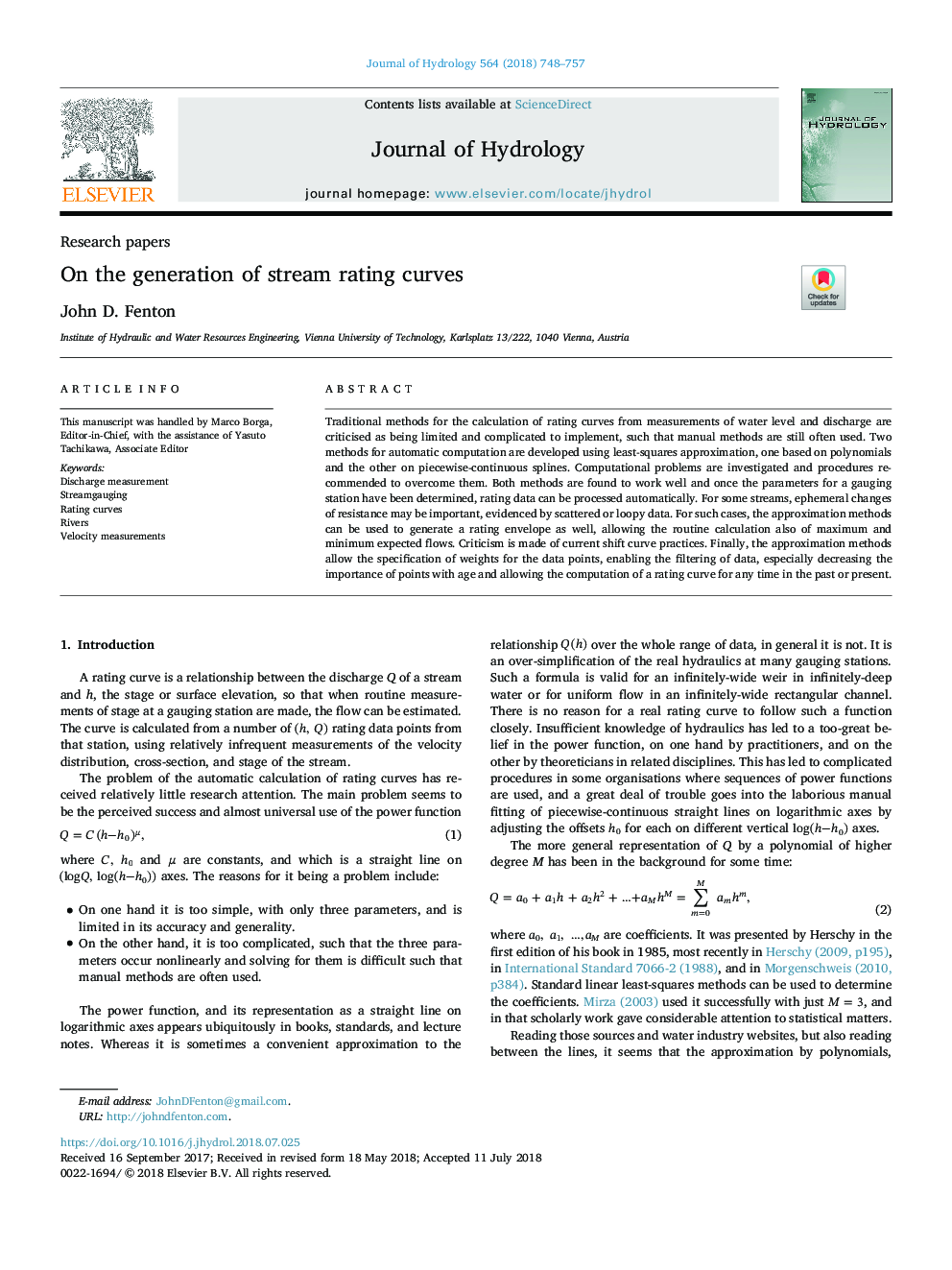| Article ID | Journal | Published Year | Pages | File Type |
|---|---|---|---|---|
| 8894507 | Journal of Hydrology | 2018 | 10 Pages |
Abstract
Traditional methods for the calculation of rating curves from measurements of water level and discharge are criticised as being limited and complicated to implement, such that manual methods are still often used. Two methods for automatic computation are developed using least-squares approximation, one based on polynomials and the other on piecewise-continuous splines. Computational problems are investigated and procedures recommended to overcome them. Both methods are found to work well and once the parameters for a gauging station have been determined, rating data can be processed automatically. For some streams, ephemeral changes of resistance may be important, evidenced by scattered or loopy data. For such cases, the approximation methods can be used to generate a rating envelope as well, allowing the routine calculation also of maximum and minimum expected flows. Criticism is made of current shift curve practices. Finally, the approximation methods allow the specification of weights for the data points, enabling the filtering of data, especially decreasing the importance of points with age and allowing the computation of a rating curve for any time in the past or present.
Related Topics
Physical Sciences and Engineering
Earth and Planetary Sciences
Earth-Surface Processes
Authors
John D. Fenton,
